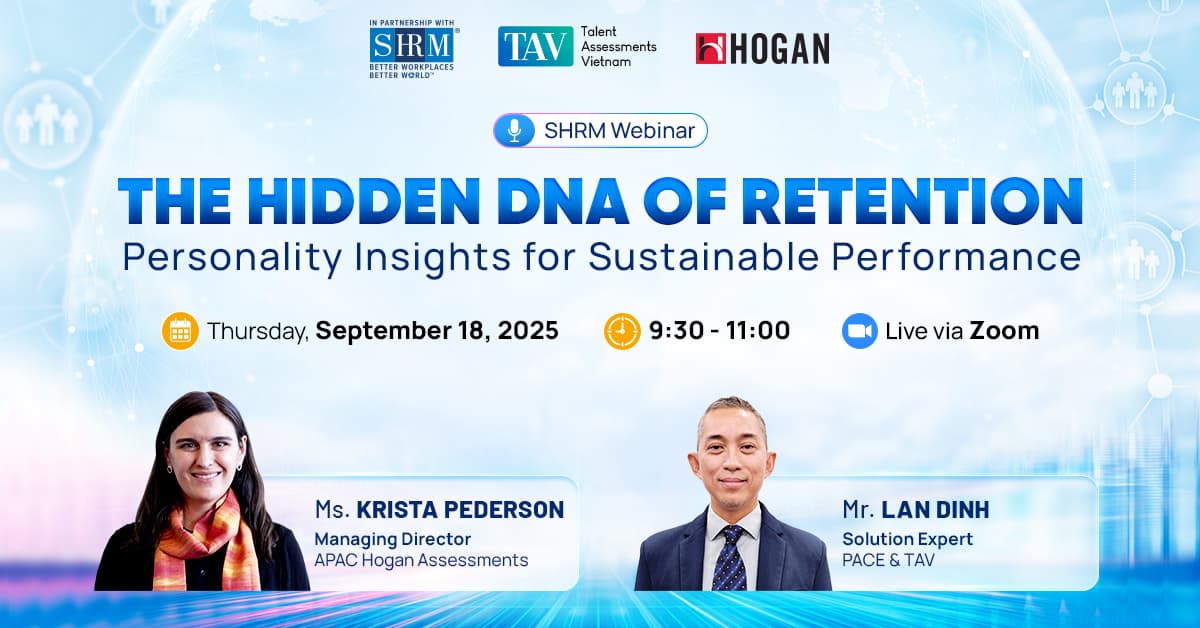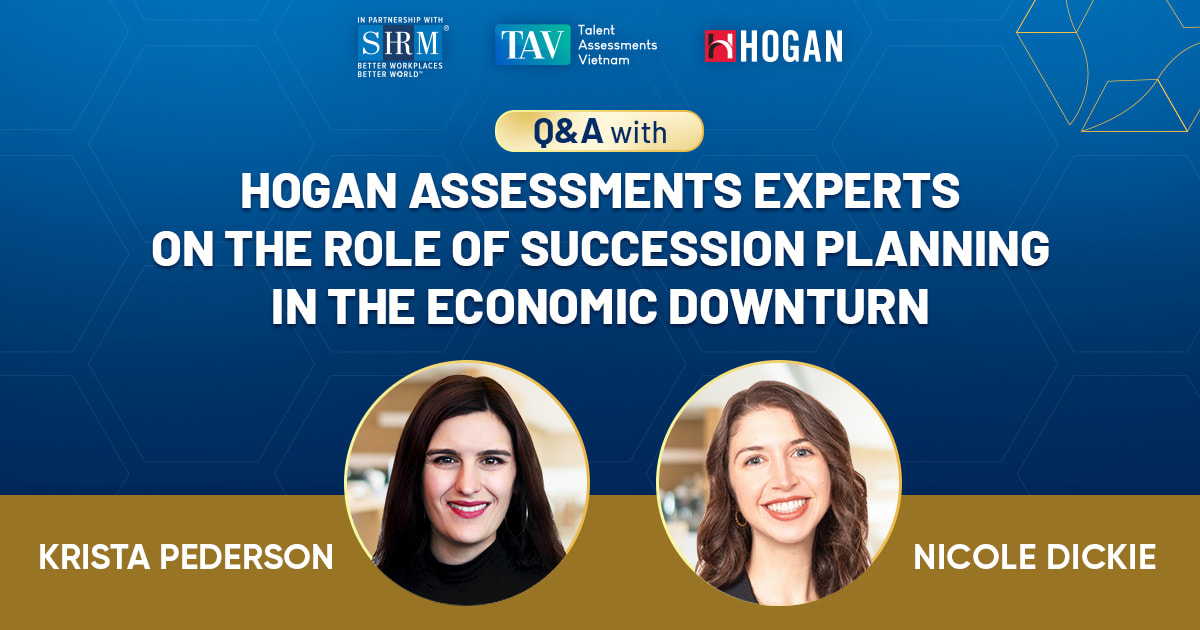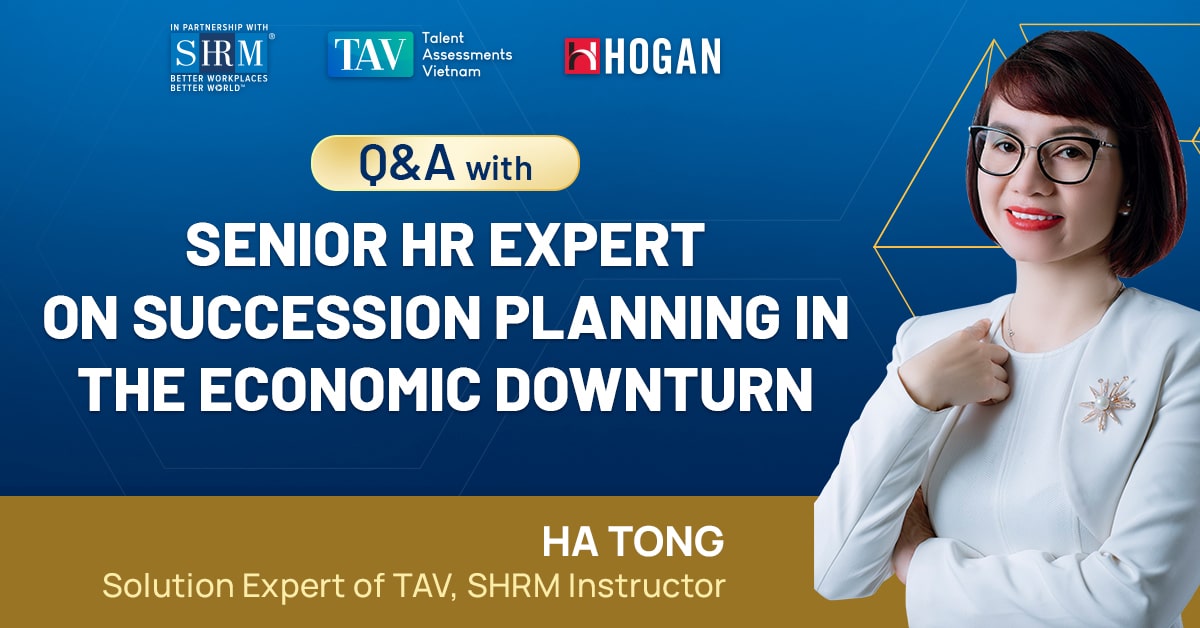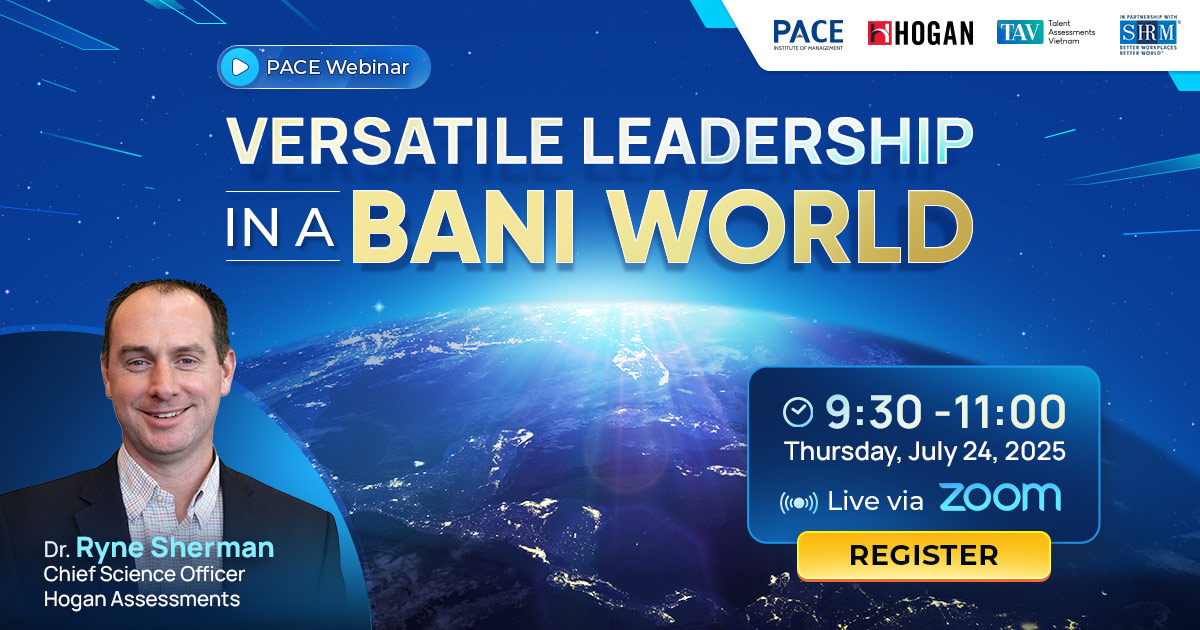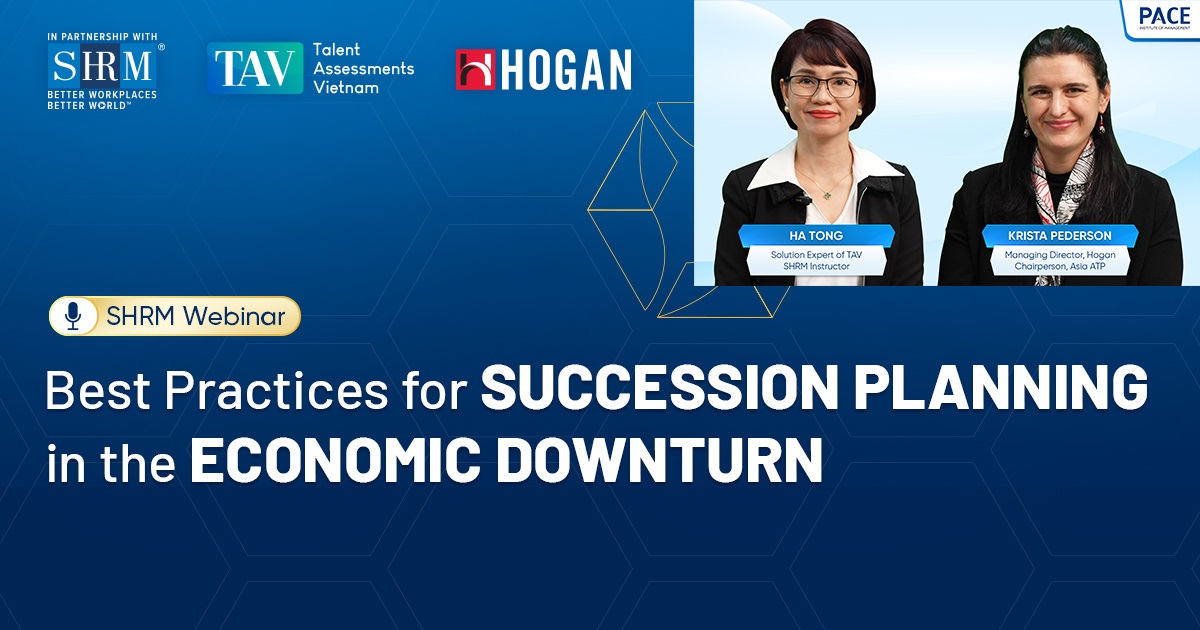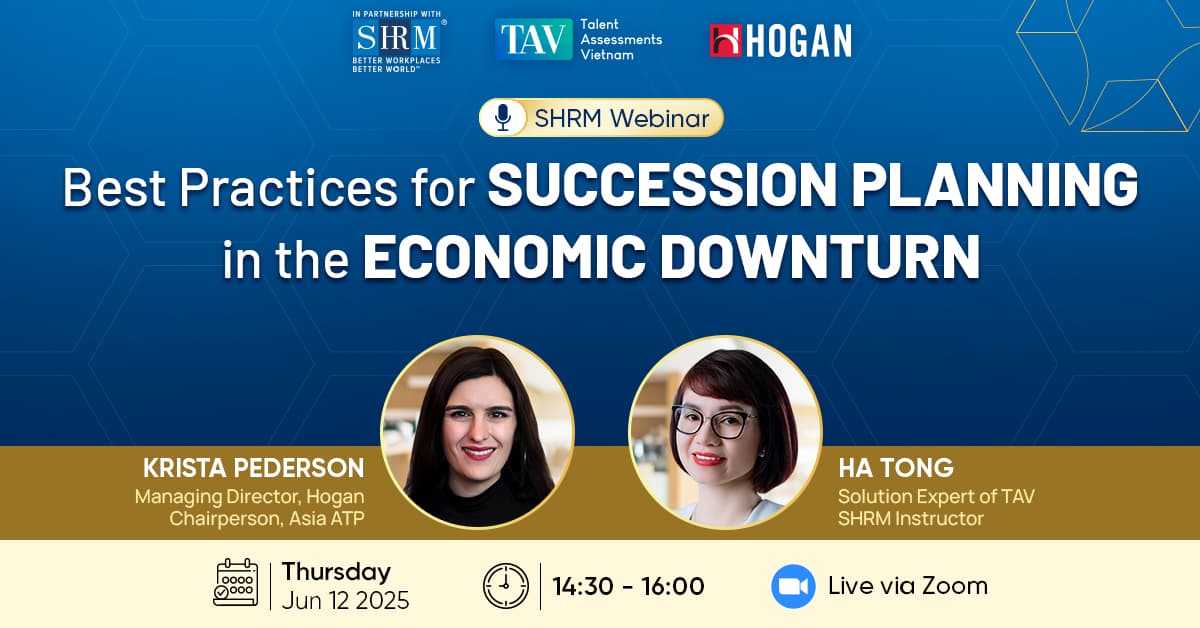Q&A WITH HOGAN ASSESSMENTS EXPERTS ON THE ROLE OF SUCCESSION PLANNING IN ORGANIZATIONAL RECOVERY AFTER CRISIS
Organizations are continuously facing increasingly complex economic disruptions. Therefore, the role of succession planning extends beyond ensuring an orderly and effective leadership transition; it also serves as a strategic lever that enables organizations to recover more quickly after crises.
As part of the international conference “Best Practices for Succession Planning in the Economic Downturn”, we had the opportunity to speak with two senior experts from Hogan Assessments: Ms. Krista Pederson, Managing Director, Asia Pacific, and Ms. Nicole Dickie, Senior Consultant, to gain deeper insights into the role of succession planning in rebuilding organizations after crises.
Krista Pederson: From Bias to Data – Shifting the Mindset on Succession Planning
Question 1: In many Asian organizations, including Vietnam, succession decisions are often influenced by personal bias or relationships rather than data. What common biases have you observed, and how does Hogan help mitigate them?
Krista: This is a common reality in many organizations across Asia. Succession decisions are often based on intuition, tenure, or even highly subjective factors such as physiognomy. Appointing someone to a new position merely because of seniority, appearance, or having a so-called “leadership presence” is still widespread.
Gender bias also remains an issue. In many parts of the world, not only in Asia, men still tend to have a higher probability of being appointed to leadership roles. Furthermore, extroverted and assertive individuals are frequently perceived as “standout leaders” and prioritized, even though there is no guarantee that their leadership will deliver sustainable effectiveness in the new role.
Through decades of research and assessments, Hogan provides objective data to minimize such biases and enable organizations to make better talent decisions. Hogan assessments do not measure or report on age, gender, or appearance. Instead, they focus solely on personality and behavioral tendencies to provide insights. In organizations with strong “internal politics,” Hogan data is still highly recommended to support selected individuals in developing leadership behaviors that can help them better lead and grow their teams.
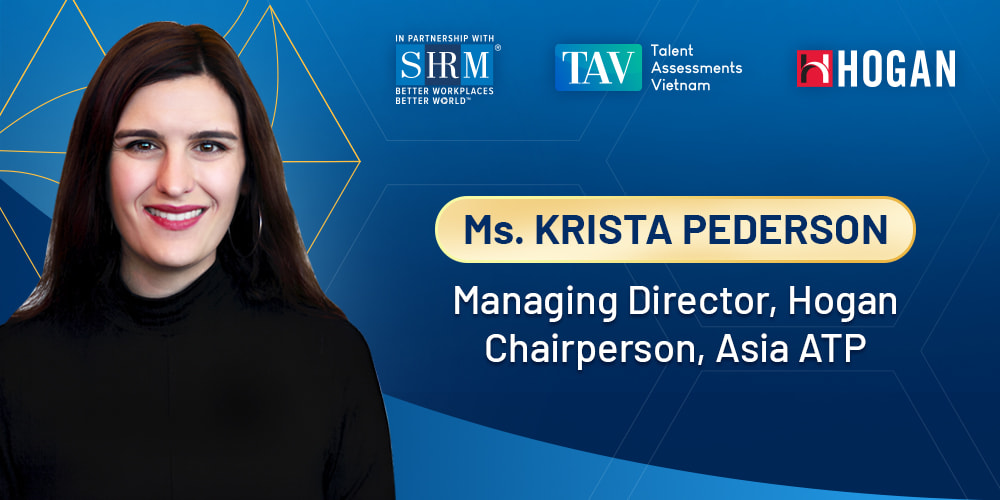
Question 2: Assessments are often seen as decision-support tools, but some organizations are now using them for personal learning and leadership development. How does Hogan help organizations move from “assessment” to “action and development”?
Krista: That is an excellent question. In fact, it directly relates to how advanced an organization is in building and implementing its talent strategy.
For organizations new to using assessments, they may not fully understand the value that assessments especially when tightly linked to business strategy can provide. In fast-growing economies like Vietnam, many organizations recognize that assessments are considered good practice in organizational management. However, not all invest the necessary time to develop a comprehensive talent strategy aligned with business objectives. Instead, they often adopt an assessment tool simply because they have “heard it’s good practice,” and assume that running one assessment completes the process. This approach misses a great deal of potential value.
The true power lies in deeply understanding the talent pool and, more importantly, knowing how to apply that knowledge in practice. This only happens when assessments are accurate and predictive of performance. Hogan’s entire suite of assessments is designed with a single purpose: to predict job performance within organizational contexts. This provides detailed data on leaders and talent, directly supporting the execution of business strategies.
In Vietnam, we partner with Talent Assessments Vietnam, who not only support organizations in running assessments but also in translating those insights into practical value. They can provide 1:1 feedback sessions for leaders who need targeted development, facilitate group or departmental interventions when collective growth is required, and help organizations shift from simply “assessing” to taking meaningful and actionable steps at both individual and team levels.
Beyond this, they can also offer an organizational-level perspective. By analyzing data across the organization, they help identify areas for improvement, ensuring that culture and talent strategies align with broader business objectives.
We encourage organizations to use fair, highly accurate assessments. More importantly, we recommend working with Talent Assessments Vietnam to maximize the value of assessment data and turn it into actionable insights. Running a single assessment is only the first step. Truly mature organizations use assessments enterprise-wide and know how to fully leverage the insights to drive their talent strategy.
Question 3: If budgets are limited, should organizations still invest in tools like Hogan?
Krista: With limited budgets, organizations do not need to implement assessments across the entire workforce. Instead, they should prioritize key roles—where a poor appointment decision would be far more costly than the investment in assessments. By focusing resources on these critical positions, organizations can optimize budget effectiveness while maintaining quality in strategic talent decisions.
Question 4: In your view, what differentiates organizations with successful succession planning?
Krista: From my observations, organizations with effective succession planning begin with a strategic question: “What type of leadership does this organization need to succeed in the future?” They are not simply seeking replacements, but rather building leadership capabilities aligned with long-term strategy.
Such organizations use data rigorously to distinguish between individuals with “potential” and those truly capable of succeeding in leadership roles. They continually refine their definition of effective leadership—not just based on charisma or visibility—but emphasizing qualities such as listening, team-building, and long-term commitment to organizational goals.
Nicole Dickie: Succession as a Recovery Strategy, Not Just Future Preparation
Question 1: How does investment in succession planning impact organizational resilience after crises? Does it really help organizations recover faster?
Nicole: That is an excellent question. We have observed that investing in the succession pipeline—identifying, developing, and retaining high-potential talent—delivers value in any environment, whether stable or disrupted. However, during and after crises, this investment becomes even more impactful.
Hogan’s global research shows that crises are the most effective times to invest in high-potential talent. When organizations continue to develop and retain their best people despite resource constraints, they send a clear message: “You are valued.”
This not only strengthens engagement but also ensures future leaders are equipped with the agility and resilience to guide the organization through challenges. Since these individuals already understand the organization and their roles, their time-to-productivity is significantly shortened.
We also know that personality and leadership behavior directly influence performance. By investing in leaders with confidence, resilience, optimism, and the ability to build high-performing teams, organizations are simultaneously investing in adaptability and sustainable performance.

Question 2: Many organizations measure succession success through post-appointment KPIs. From Hogan’s personality science perspective, what metrics should be used to evaluate the effectiveness of succession planning?
Nicole: There are many data points organizations may consider when evaluating succession programs. Common ones include:
- Succession pipeline readiness: How many successors are ready in 1–2 years, 3–5 years, or immediately?
- Retention rates: What percentage of high-potential talent is being retained?
- Development participation: What percentage of high-potentials are engaged in personalized development programs?
That said, we recommend focusing on three critical indicators:
- Team or business unit performance. At Hogan, we define leadership as the ability to build and sustain high-performing teams. Therefore, team performance under a leader is a direct reflection of leadership success.
- Leader 360 feedback. This gathers multi-rater input from supervisors, peers, subordinates, and stakeholders. Running 360 feedback before and after succession provides a clear picture of growth and effectiveness over time.
- Employee engagement surveys. Since leadership directly impacts morale and performance, engagement levels within the leader’s team serve as a valuable indirect indicator of leadership impact.
It is important to note that most of these are lagging indicators—they are measured after the fact. Thus, we recommend a pre-post design: measure team performance, 360 feedback, and engagement before the successor assumes the role, then again after 6–12 months. This approach enables organizations to track change and comprehensively assess leadership effectiveness.
Conclusion
Succession planning is no longer just a “future issue”; it is a critical component of both growth strategies and crisis management. Scientific, data-driven assessments like Hogan provide objectivity, helping organizations select and develop the right people, in the right way, at the right time.
Investing in future leaders—particularly during times of uncertainty—is, ultimately, an investment in organizational recovery, resilience, and long-term sustainability.
